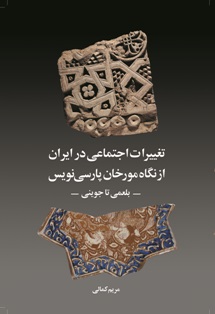The science of history as the ability to reread the past experiences of human beings has perceived the attention of many intellectuals. In other words, history is one of the critical origins of the modern fields of science. Time, the main concern of the science of history, is one of the problems that natural scientists aim at discovering its different aspects to overcome its limitations. Having a more successful future to open the high gates of science depends on having access to the past experience of human beings in order to reinforce their victories and not to repeat their mistakes which leads to saving time. Therefore, the treasuries of time require going through the deep phases of history.
The medieval history of Iran is one of the significant phases of Iranian history which has equipped the world with highly developed civilization and culture. The rebirth of the Persian language after centuries and its development to the language of history with Bal’ami, Bayhaqi, and Jovayni equipped the historical works of this time with profound content and well-organized structure.
Social Change in Iran: the Perspective of Persian Writing Historians: Bal’ami to Jovayni by Maryam Kamali is an attempt to open new windows onto the medieval history of Iran. Social change is a modern notion that has roots in sociology and social science; however, based on what we read in this book social change has never been separated from historical notions The author tries to examine the medieval history of Iran through the perspective of social change.
Given that the historical phases are connected and based on the main elements of the structuration theory i.e. the agent, structure, power, time, and space, the social changes are examined. Regarding power as one of the critical elements of the circle of social change, this book focuses on those structures that aim at achieving power and does not go through the social history and the lives of ordinary people. Looking at social changes through the perspective of Persian historians, on the other hand, classify this book as one the main studies on Persian historiography.
The book includes an introduction and four chapters:
Introduction
It introduces readers to the theoretical framework, methodology, and primary sources. Drawing on all Persian historical sources written between Tarikhnama-ya Bal’ami (963) and Jahan-gosha-ya Jovayni (1260) including Tarikh-e Bayhaqi, Zayn al-Akhbar Gardizi, and Sirat-e Jalal al-Din Mengeburni by Nasavi, and referring to later Persian historical sources such as Jama’ al-Tawarikh Rashid al-Din Fadlollah as well as Arabic sources provides a comprehensive study of the Iranian Medieval times during the Abbasids. Moreover, she has gone through all studies in English, Arabic, and Persian to equip her research. The maps, diagrams, and tables of social changes of each dynasty provide the readers with an overall picture of social changes. The book is written with a clear and fluent language.
Formation of Iranian Authority in the Abbasid Caliphate
The first chapter contextualizes the roles of Iranian Amirs including Abu Muslim Khorasani and Tahir and Viziers namely the Barmakids and Fazl ibn Sahl in the formation and establishment of the Abbasid Caliphate.
The Structure of the Iranian Dynasties: The Multiple Forms of Semi-Independence
This chapter explores the social changes developed in Iran under the Iranian regional dynasties of the Tahirids (820-865), Samanids (900-998), Saffarids (861-1008), Alavids (868-928) and the Buyids (932-1055). The social changes introduced in this era are diverse because of the presence of various numbers of agents and structures.
The Presence of Turk Agents in the Power Structure
It addresses the social structures and agents introduced during the rule of the Turkish dynasties of Ghaznavids (963-1186) and the Saljuqs (1138-1194). One of the interesting parts of this chapter is the one that examines the social changes developed through the conflicts between viziers and the military commanders.
Khwarazshah and Mongols: At the Threshold of a New Phase of History
This chapter explores the social changes under the Khwarazmshah (1077-1231) and the arrival of Mongols with new agents and structures that laid the foundations for a new phase of medieval history. By examining the specific notions including taqdir (destiny) in the works of historians writing in Persian from Bal’ami to Jovayni, this chapter explores how these notions rooted in determinism became a major obstacle to looking for the true causes of social change. The book ends with the hopeful accounts of the historians about the future results of social changes.
Conclusion
This section sums up the social change that developed in medieval Iran from 750 to 1258 through the interaction of social change agents and structures in achieving independence from the Abbasids.
Habib Hajiheidari


